Visiting Cappadocia Without a Tour
As the third point in Turkey’s touristic triangle after Istanbul and Ephesus, Cappadocia sees its share of visitors. We weren’t sure what to expect from the area and decided to start with just a short visit. Turns out we could have happily spent much longer in the land of fairy chimneys. Although busloads of tourists flood some spots, there is still plenty of extraordinary wilderness in central Turkey.
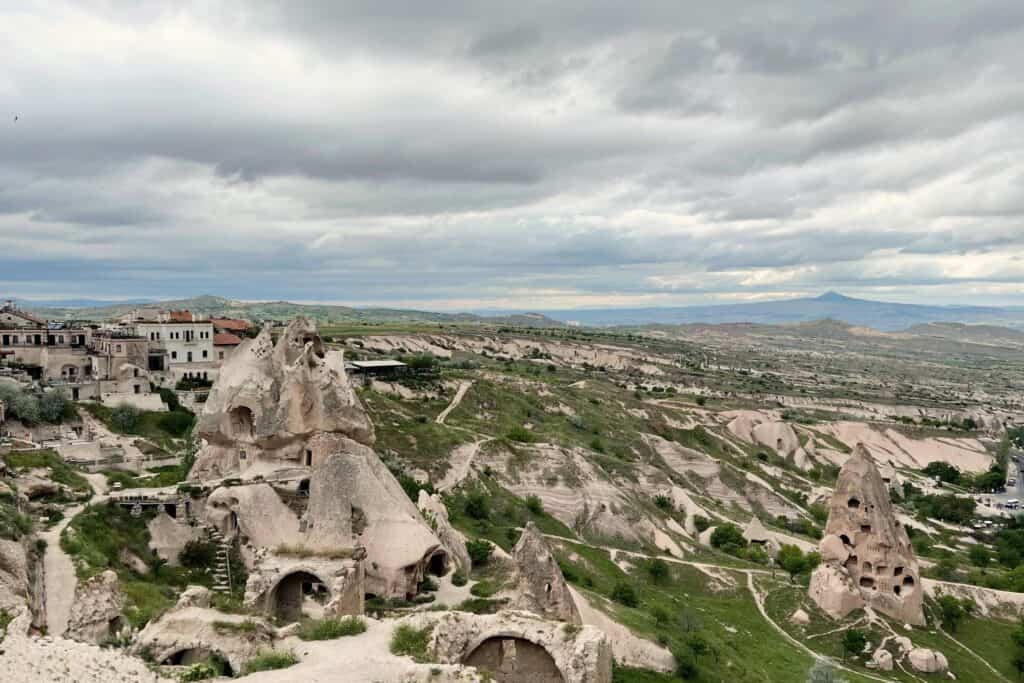
The vast majority of visitors come to Cappadocia for a balloon ride and a quick guided tour of the region’s highlights. Unfortunately these tours go to the most crowded places, with just enough time for a photo op before shuttling to the next destination – not exactly the best way to experience the landscapes’ magic. Tour operators also tend to prioritize pottery and rug demonstrations which devolve into sales pitches.
We found a middle ground by identifying a few places which wouldn’t be too hard to reach on our own, and then giving ourselves plenty of time to explore each landscape. Affable taxi drivers filled in for spotty bus service between locations, and local dogs guided us along some of our hikes. While the painted caves at Göreme were too crowded, places like Uçhisar Castle and the Zelve Open Air Museum were nothing short of magical.
Orientation
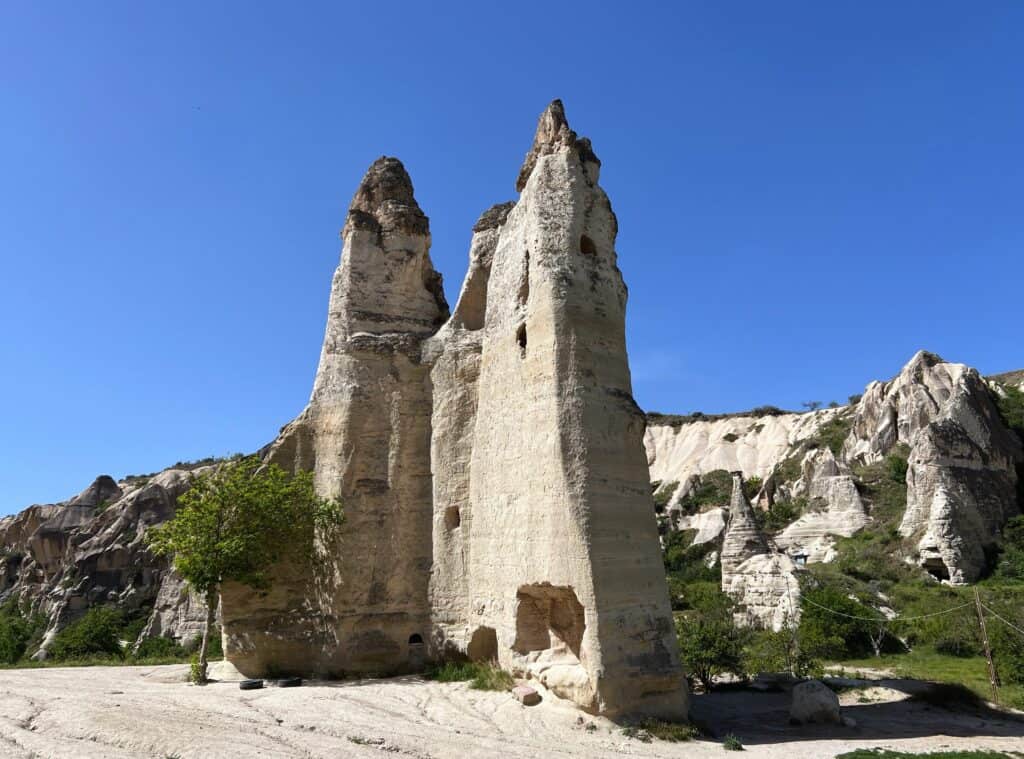
Cappadocia had already been inhabited for thousands of years before ancient Romans arrived. Because its boundaries shifted over time, it can be difficult to define the region on a map. Today Cappadocia is a string of fantastical landscapes running between the cities of Kayseri and Aksaray, with a few other sites to the south. The central area, located around the fast-growing town of Göreme, has the densest concentration of iconic scenery.
You can’t go to Cappadocia without being prompted to take a tour. Typically they are color coded according to area: Red Tours shuttle between central Cappadocia’s most famous (and crowded) attractions, while Green Tours cover more widely-scattered sites in the south.
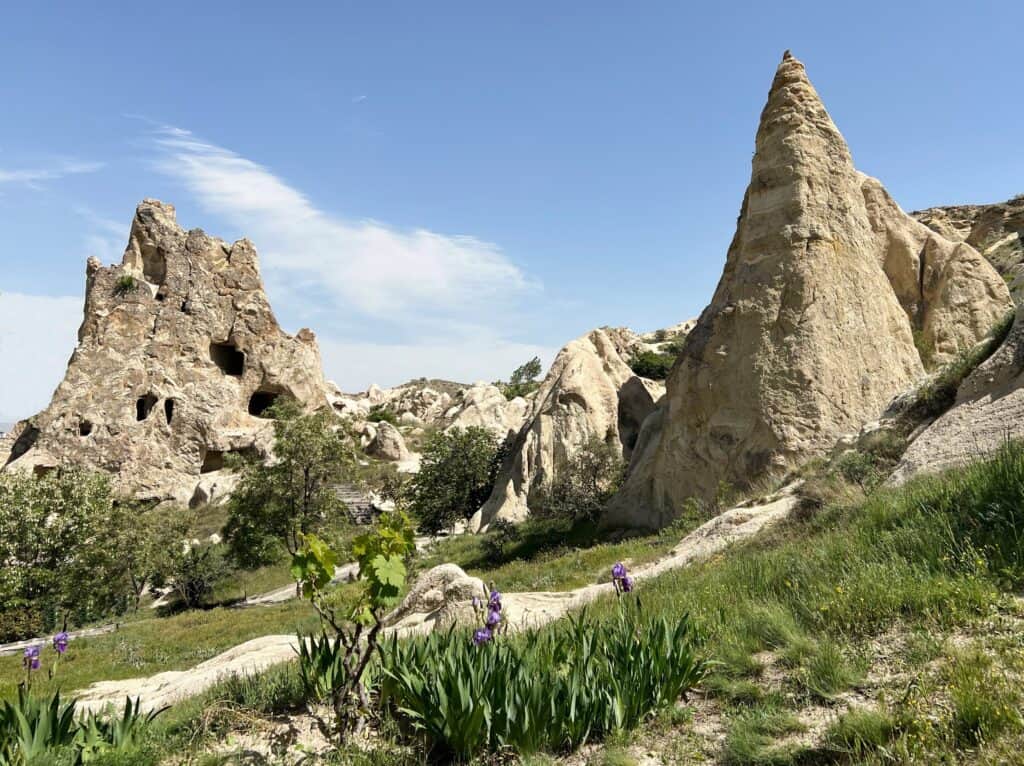
First-time visitors often take the Red Tour which includes Cappadocia’s fairy chimneys and otherworldly rock formations. The route combines the Göreme Open Air Museum, Paşabağ Valley, Uçhisar Castle, Devrent Valley, Love Valley, plus Avanos pottery and carpet emporiums. Most of the Red Tour locations are easy to visit independently.
Green Tours typically feature the Derinkuyu Underground City, Sognali, Ilhara Valley, and Selime Monastery, plus some hiking and the obligatory sales pitches. Most Green Tour locations are further afield and harder to access with public transportation or local taxis. To visit these sites, independent travellers might consider renting a car or hiring a driver for the day.
Logistics: Where to Stay and How to Get Around

We stayed just outside of Göreme and visited places within the central Nevşehir-Ürgüp-Avanos triangle. The area is small enough to visit without a car or tour. Local taxis provide an easy, quick way to travel between sites. Drivers pass out business cards so passengers can call for a pickup from anywhere. We found the prices reasonable and far more economical than the tours. (We didn’t have much luck with buses, maybe because we visited on the weekend.)
Besides Göreme, the nearby towns of Uçhisar, Çavuşin, and Ürgüp also make good bases. From any of these it’s possible to visit several destinations in one day, including a hike. We toured the sites below over the course of a day.
Göreme Open Air Museum


This cluster of rock-cut churches is probably the most renowned spot in Cappadocia. Unfortunately it’s full of tour buses, and each tiny chapel had a long wait to get in. Wandering off to the margins, we found some quieter spots and nice scenery – but overall it wasn’t a destination we’d recommend unless the weather is lousy enough to keep the masses away.
Zelve Open Air Museum
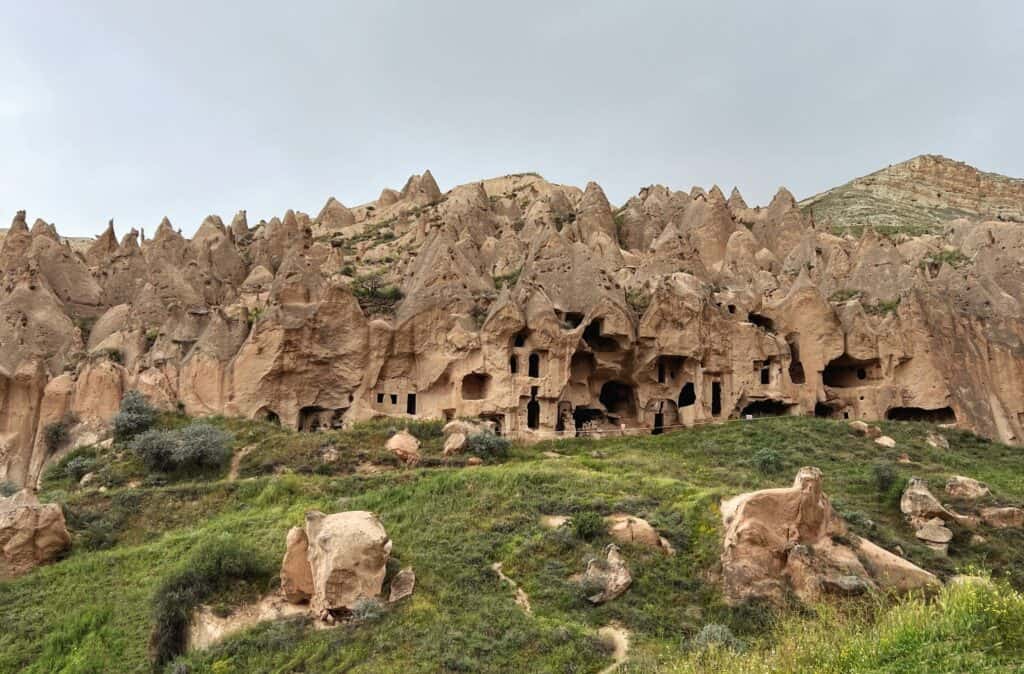
This huge site – technically a trio of valleys – is the polar opposite of the Göreme Open Air Museum. We only saw a few other people during our three hour visit.
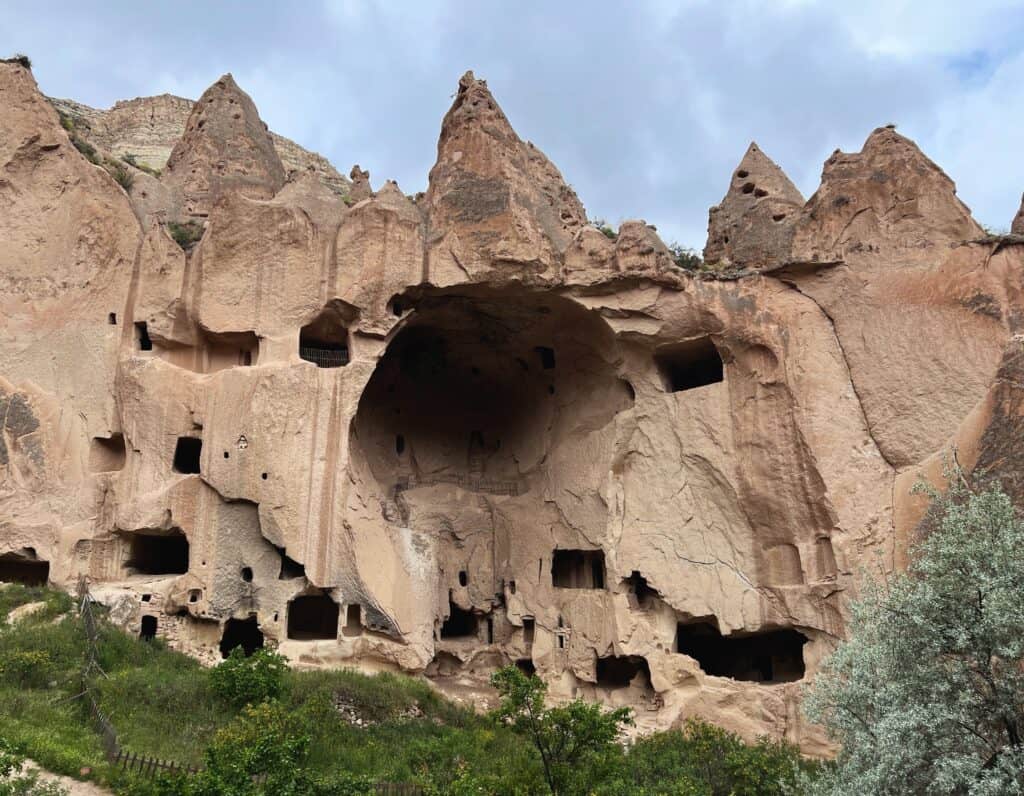
As we wandered along hilltop footpaths and down into hidden canyons, sunlight and clouds alternated to show off the landscape’s full range of textures, while wildflowers added splashes of bright color to the stone’s striations.
Zelve is one of the prime places to experience Cappadocia’s characteristic melding of human-carved caves with natural rock formations. Full of pockets and ravines, the volcanic tuff dissolves distinctions between inside and outside.
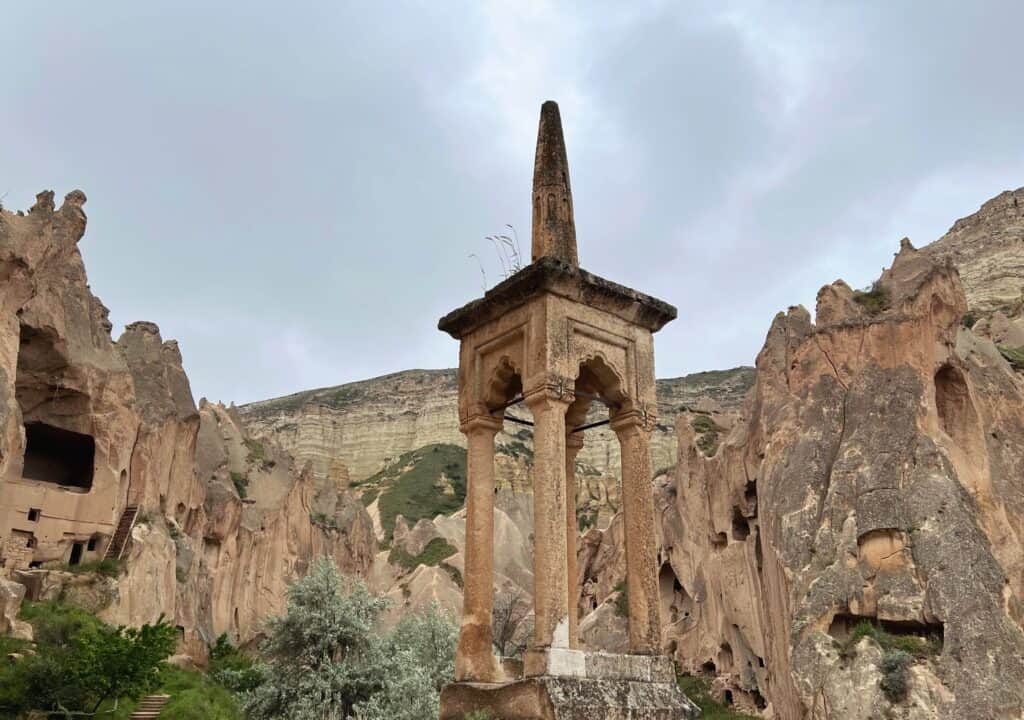
It’s unclear if the site was inhabited before monks took advantage of the remote location, making a community hidden from invasions from the ninth to the 13th centuries. Later Zelve became a village under the Ottomans, who carved the rare rock-cut mosque. The last residents moved out in the 1950’s when erosion and earthquake damage had taken a toll on the structures.
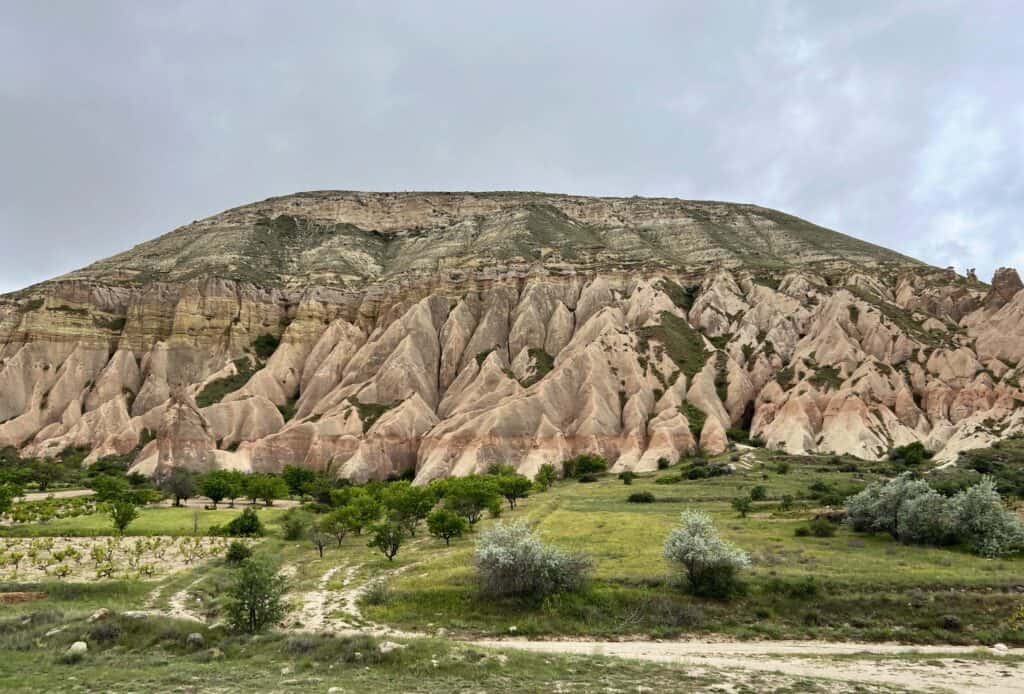
A joint ticket allows entry to both the Zelve Open Air Museum and the much smaller site at Paşabağ (Monks Valley). We walked the paved road connecting the two, but decided to pass on the latter after seeing the crowds.
For visiting information see the website.
Uçhisar Castle
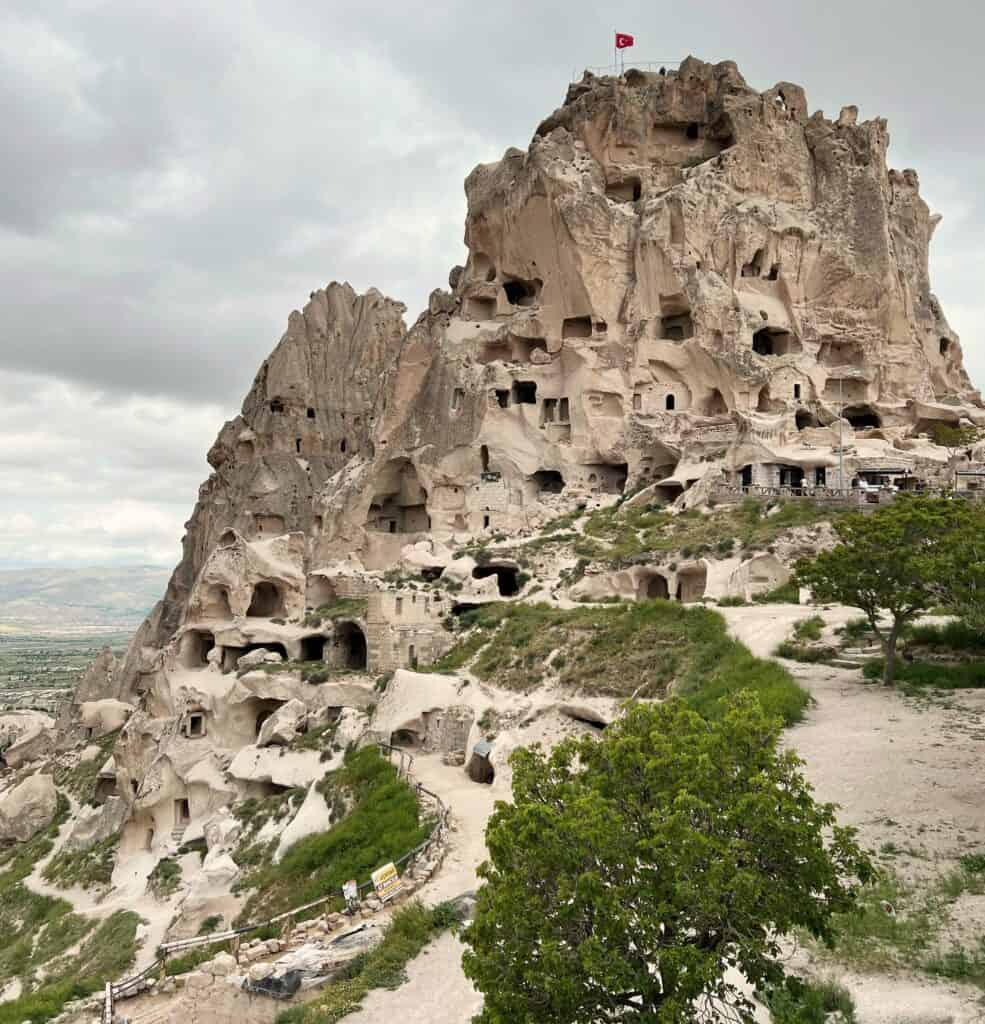
At 60 meters (nearly 200 feet), the tower of volcanic rock known as Uçhisar Castle is the region’s tallest point. Riddled with holes and tunnels, it was likely used as a fortress by the Hittites during the Bronze Age. Commanding views made it a prime defensive outpost in the ensuing millennia, especially when Cappadocia became a buffer zone between the Byzantines and waves of Islamic expansion.


Although many of the inner walls have since collapsed, climbing to the top of the formation provides some evocative glimpses. Guides recommend visiting at sunset, but going on a cloudy afternoon helped us avoid major crowds – and the views were still spectacular. Afterwards we took a break in a cliffside teahouse before wandering through the town.
Görkündere Valley
Planning hikes in Cappadocia’s valleys can be a challenge due to a lack of consistent information. Trailheads on various apps are often incorrectly labeled, and travel blogs give conflicting accounts about the best hikes and how to find them. We were pretty confused before we arrived, but fortunately things were much easier on the ground.
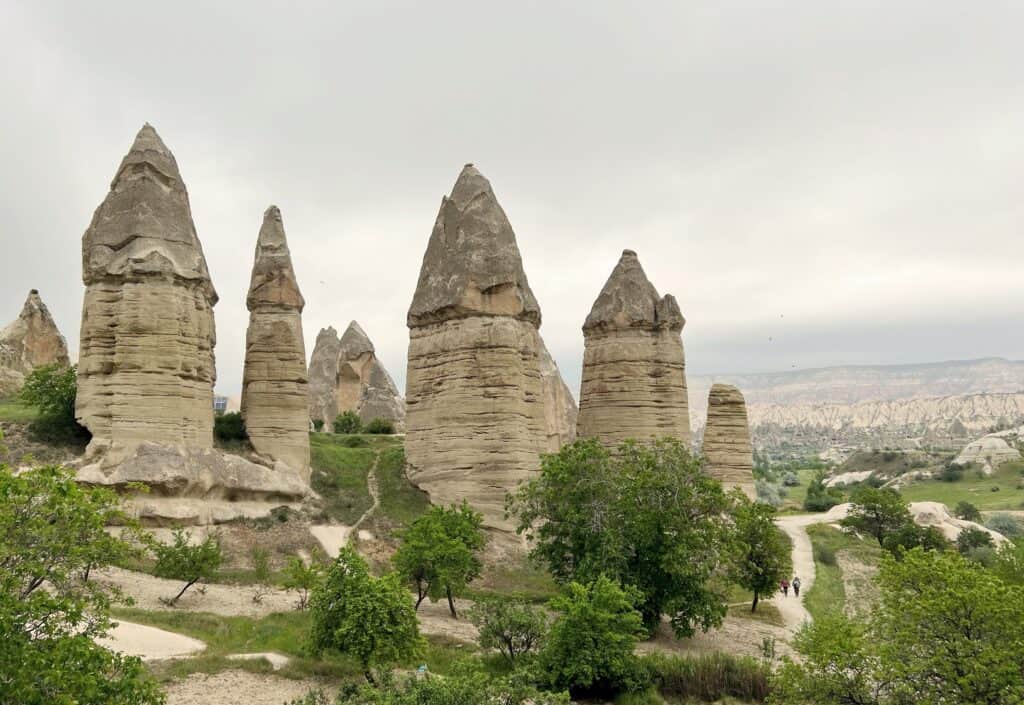
Görkündere (Rocket) Valley often gets mixed up with Love Valley, since both places feature an array of phallic rock formations. Some even call it the “Second Love Valley” but Görkündere is easier to get to. Just outside Göreme, it’s a great way to see some of the most iconic scenery without crowds or a extended hike.


To reach the fairy chimneys, take the main road which travels between central Göreme and the Göreme Open Air Museum. Make a right at the sign for Görkündere Vadisi and follow any of the unpaved roads towards the towering rock formations in the distance.
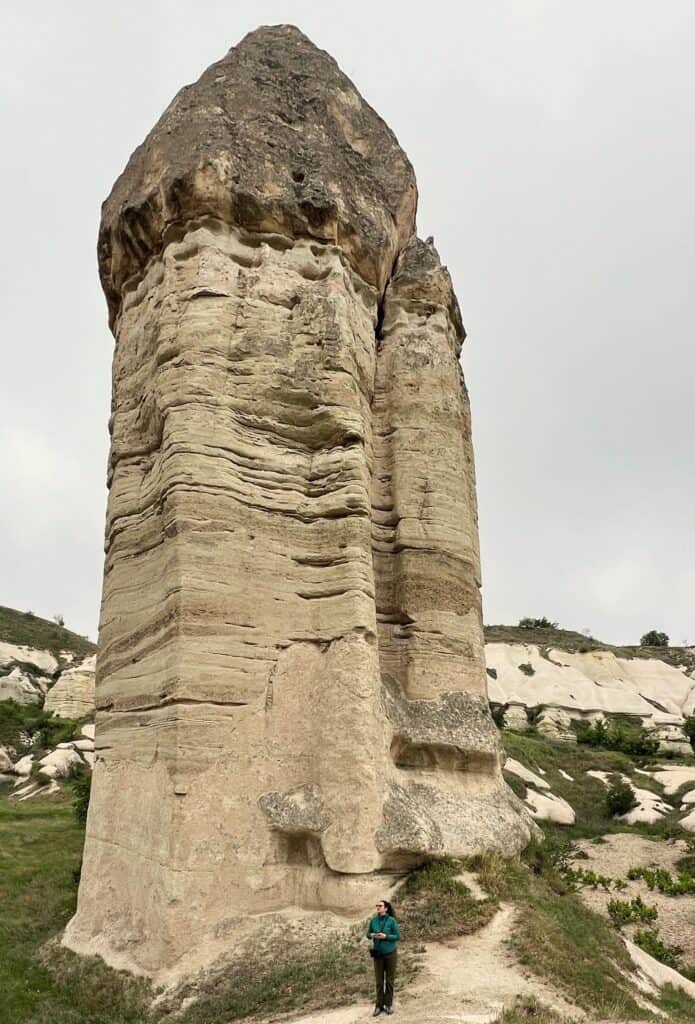
The rock formations’ strange shapes evoke endless associations. Sometimes they are objects in the landscape; other times they are large enough to create landscapes unto themselves. Various paths wind around the valley, and there are a few spots with the option to scramble up for a view. One can apparently climb a fence to reach a viewpoint and then come out on a different road, but we circled back the way we came, passing Görkündere Café Breakfast on our way back.
Further Reading
For more on Turkey, see our posts:
A Guide to Istanbul’s Three Monumental Cisterns
A Guide to Istanbul’s Byzantine Architecture
Istanbul’s Topkapı Palace – Is it Worth the High Ticket Price?
The Towns of the Turquoise Coast: Antalya, Kaş, & Fethiye

